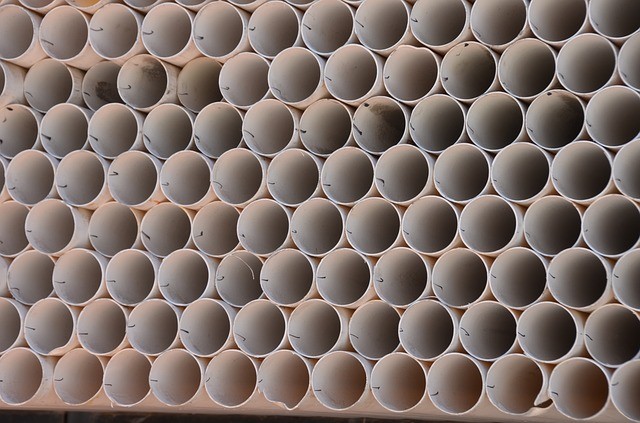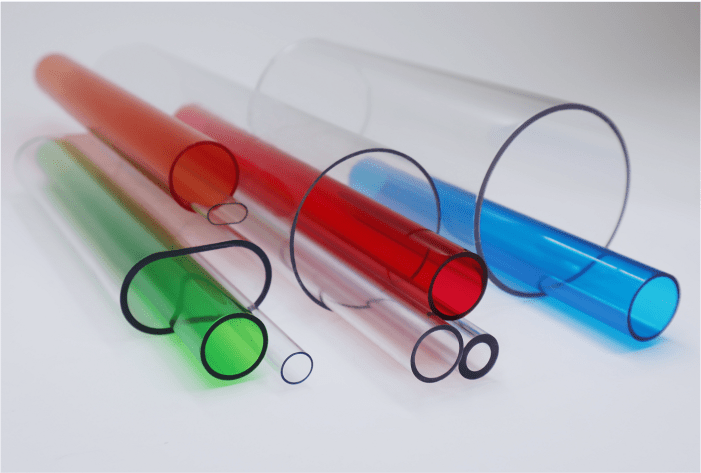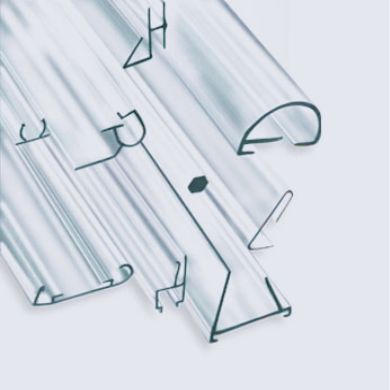The market for plastic packaging is worth over $348.08 billion. It’s a massive industry that’s become a part of every other, keeping the products you use every day safe and protected.
There’s a wide range of plastic packaging options to choose from, but PETG and PVC are 2 of the most common types. They’re both effective but have unique applications and advantages to consider.
Read on to learn how to compare PETG vs. PVC and decide which one is the best option for your needs.
 What Are PETG and PVC?
What Are PETG and PVC?
Each type of plastic packaging has its own anagram, such as LDPE, PP, PET, PETE, CAB, CAP, and PLA. These abbreviations serve as an alternative to saying the full names of the complex elements and materials that make them up.
Having an idea of how plastic packaging materials are made and what they’re made of is the first step in deciding which one is the best choice for you.
PETG
PETG is also known as copolymer polyethylene terephthalate glycol. It’s a form of polyester that can be extruded or molded into almost any product.
The way that PETG is made distinguishes it from other plastic products with PET in their name. It requires a 2-step melt-phase polycondensation process that joins 2 monomers together and releases smaller molecules. It can be injection molded, sheet extruded, or used as a filament for 3D printing. it can also be colored during production.
Unlike other PET or polyethylene terephthalate plastics, it contains glycol. This prevents crystallization but creates a hazy appearance.
PVC
PVC is also known as polyvinyl chloride. It’s the third most-produced plastic polymer in the world behind polyethylene and polypropylene. You’ve likely encountered it in either the packaging of your favorite product or in the product itself.
The primary ingredient in PVC is chlorine. Creating it is a complex process of combining specific chemicals.
These combinations can be toxic. Making PVC releases a carcinogenic gas known as vinyl chloride that’s made by combining oxygen and hydrogen chloride over copper.
One way to identify PVC is to see how it reacts under pressure. It’s fragile enough to crack or bend if stressed and may make a crackling sound if you squeeze it.
What Are the Applications of PETG vs. PVC?
The primary reason that there are so many different types of plastic packaging is that they’re not all used for the same purposes. One may be able to handle storage in a hot, humid area while another can’t.
PETG and PVC share certain applications, but there are situations where you’d want to use one over the other.
Applications of PETG
PETG is often used in 3D printing, including creating the material in the printers themselves. It also has several applications in the medical industry, including:
- Pharmaceutical and medical tubes
- Implants and braces
- Medical device and pharmaceutical packaging
PETG is used for creating and containing cosmetics and personal care products. It’s also an effective marketing tool when used in displays for retail stores or graphic displays and signage.
PETG is used in blister packs, a type of packaging that has a plastic cavity or pocket for tools and stationary. It also serves as a sealed package, protective coating, or guard for almost any product.
PETG also has single-use applications such as drinking bottles and food containers.
Applications of PVC
PVC is used in the construction industry in several ways, such as creating pipes, conduits, siding, and window and door frames. When combined with a plasticizer, it can also be used for floor tiles, garden hoses, imitation leather, and shower curtains.
PVC can create heavy-duty packaging or blister packs. It’s also found in medical shrinkwrap and used to package over-the-counter medications. It’s also found in clamshells and packaging for deli or meat products.
What Are The Pros and Cons of PETG vs. PVC?
Certain types of plastic packaging share materials or a similar manufacturing process. It may seem like they’re interchangeable, but this couldn’t be further from the truth.
How you package a product can end up determining whether or not it arrives at your customer’s door or at the shop they purchase it from in one piece. Choosing the right materials is an important step that requires considering the pros and cons of all your available options.
Pros and Cons of PETG
Although it’s a newer type of plastic packaging, PETG is quickly growing in popularity. It hasn’t yet overtaken PVC, but there may come a day when it does.
The many benefits of PETG packaging include:
- High impact and chemical resistance
- Transparent and glossy appearance
- Durability
- Affordability
- Full recyclability
- No BPA
- RF sealability
- Easy to mold and thermoform
- FDA compliance
- No waste materials, byproducts, or toxic fumes or odors
- Low smoke density and toxicity
- Low forming temperatures
- Easy cleaning
There are several reasons to use PETG packaging for your products. It protects them from damage while helping them stand out on store shelves.
The primary disadvantages to PETG are that it can suffer from heat degradation and that it doesn’t offer UV resistance for long-term outdoor applications.
Pros and Cons of PVC
PVC is resistant to oil, chemicals, and other forms of damage. It’s strong but maintains clarity, giving it a range of uses and keeping it durable.
The problem with PVC is that its manufacturing byproducts can be toxic to humans. It’s the least environmentally friendly of all your plastic packaging options, though it can be recycled and turned into building materials.
Where to Find the Best Packaging for Products
Plastic packaging is a large industry with a wide range of options. Two of the best are PETG and PVC. They contain and protect products well but have their own pros and cons to consider.
Deciding between PETG vs. PVC depends on what you’ll be using them for. Consider how your product needs to be packaged and how before choosing one over the other.
Petro Packaging is a family-owned business with 40 years of experience in creating plastic extrusions for packaging and product displays. Request a quote or sample of our products today.

 What Are PETG and PVC?
What Are PETG and PVC?

